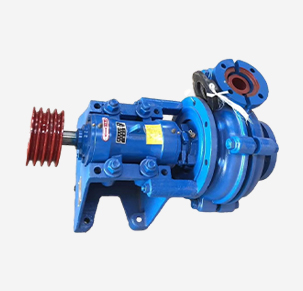English
- Afrikaans
- Albanian
- Amharic
- Arabic
- Armenian
- Azerbaijani
- Basque
- Belarusian
- Bengali
- Bosnian
- Bulgarian
- Catalan
- Cebuano
- Corsican
- Croatian
- Czech
- Danish
- Dutch
- English
- Esperanto
- Estonian
- Finnish
- French
- Frisian
- Galician
- Georgian
- German
- Greek
- Gujarati
- Haitian Creole
- hausa
- hawaiian
- Hebrew
- Hindi
- Miao
- Hungarian
- Icelandic
- igbo
- Indonesian
- irish
- Italian
- Japanese
- Javanese
- Kannada
- kazakh
- Khmer
- Rwandese
- Korean
- Kurdish
- Kyrgyz
- Lao
- Latin
- Latvian
- Lithuanian
- Luxembourgish
- Macedonian
- Malgashi
- Malay
- Malayalam
- Maltese
- Maori
- Marathi
- Mongolian
- Myanmar
- Nepali
- Norwegian
- Norwegian
- Occitan
- Pashto
- Persian
- Polish
- Portuguese
- Punjabi
- Romanian
- Russian
- Samoan
- Scottish Gaelic
- Serbian
- Sesotho
- Shona
- Sindhi
- Sinhala
- Slovak
- Slovenian
- Somali
- Spanish
- Sundanese
- Swahili
- Swedish
- Tagalog
- Tajik
- Tamil
- Tatar
- Telugu
- Thai
- Turkish
- Turkmen
- Ukrainian
- Urdu
- Uighur
- Uzbek
- Vietnamese
- Welsh
- Bantu
- Yiddish
- Yoruba
- Zulu
Telephone: +86 13120555503
Email: frank@cypump.com
Nov . 19, 2024 07:11 Back to list
similar topic seals for slurry pumps - all you need to know
All You Need to Know About Seals for Slurry Pumps
When it comes to the challenging environments of mining, construction, and wastewater management, slurry pumps play a crucial role. These pumps are designed to handle abrasive, viscous, and corrosive mixtures that can impede efficiency and reduce equipment lifespan if not managed correctly. One of the key components of slurry pumps is the seal, which prevents leakage of the pumped material and protects the pump's internal components from wear and corrosion. In this article, we will explore the different types of seals used in slurry pumps, their advantages and disadvantages, as well as best practices for maintenance.
Types of Seals for Slurry Pumps
1. Mechanical Seals Mechanical seals are widely used in slurry pumps due to their ability to provide a reliable barrier against leakage. They consist of two primary components a rotating face and a stationary face, which create a sealed chamber. Mechanical seals are effective at handling high pressures and temperatures, making them suitable for most slurry applications. They also require less maintenance compared to traditional packing seals.
2. Packing Seals Packing seals consist of a series of fiber or synthetic material rings packed around the shaft of the pump. While these seals are less expensive than mechanical seals, they can create more friction, leading to higher wear and energy costs. Moreover, they require regular maintenance and adjustments to prevent leakage and overheating.
3. Lip Seals Lip seals are another option for slurry pumps, especially in applications with lower pressure and temperature requirements. A lip seal uses a flexible lip to maintain contact with the rotating shaft, providing a barrier against the entry of contaminants. They are less durable than mechanical seals and packing, making them suitable for less demanding applications.
4. Dynamic Seals These are typically used in environments where liquid-to-liquid seal integrity is necessary. They are often employed in vertical slurry pumps where significant vertical gaps can be present. Dynamic seals can provide reliable performance when installed correctly, but they too require regular inspections and monitoring.
Advantages and Disadvantages
Each type of seal comes with its own set of advantages and drawbacks. Mechanical seals are favored for their efficiency and low maintenance needs; however, they can be costly to replace if they fail. Packing seals are economical and easy to replace but often require continuous monitoring and adjustments to maintain effectiveness. Lip seals offer a straightforward solution but may not withstand harsh slurry environments. Dynamic seals can be beneficial in specific applications but require precise installation for optimal performance.
similar topic seals for slurry pumps - all you need to know

Maintenance Best Practices
Regardless of the type of seal used, proper maintenance is essential to prolong the lifespan of slurry pump seals
1. Regular Inspections Frequent checks can help identify wear and potential failure points before they lead to significant leaks or pump downtime. Inspect seals for signs of wear, cracks, or corrosion.
2. Monitor Operating Conditions Keeping track of the temperature, pressure, and ph levels of the slurry will help determine if the current seal is appropriate for the application. Adjustments can be made based on these readings.
3. Proper Installation Following manufacturer guidelines for installation is paramount. Misaligned or poorly installed seals can cause premature failure and result in costly downtime.
4. Use of Quality Materials Investing in high-quality seal materials that are resistant to abrasion and corrosion can significantly improve seal performance and reduce maintenance needs.
5. Lubrication Ensuring that seals are adequately lubricated can help minimize friction and wear, prolonging their life and maintaining pump efficiency.
Conclusion
Seals are a pivotal element of slurry pumps, ensuring efficiency and longevity in demanding applications. Understanding the different types of seals available, along with their respective advantages and maintenance requirements, can greatly enhance the performance of slurry pumps. Investing time and resources into proper seal selection and maintenance can lead to reduced downtime, lower operational costs, and ultimately, improved productivity. Whether you opt for mechanical, packing, lip, or dynamic seals, being informed is essential for optimal slurry pump operation.
-
ISG Series Vertical Pipeline Pump - Chi Yuan Pumps Co., LTD.
NewsJul.30,2025
-
ISG Series Vertical Pipeline Pump - Chi Yuan Pumps Co., LTD.|energy-efficient fluid handling&industrial durability
NewsJul.30,2025
-
ISG Series Vertical Pipeline Pump - Chi Yuan Pumps | Advanced Engineering&Industrial Efficiency
NewsJul.30,2025
-
ISG Series Pipeline Pump - Chi Yuan Pumps | High Efficiency, Energy Saving
NewsJul.30,2025
-
ISG Series Vertical Pipeline Pump-Chi Yuan Pumps|High Efficiency&Reliable Performance
NewsJul.29,2025
-
ISG Series Vertical Pipeline Pump|High Efficiency&Low Noise
NewsJul.29,2025










